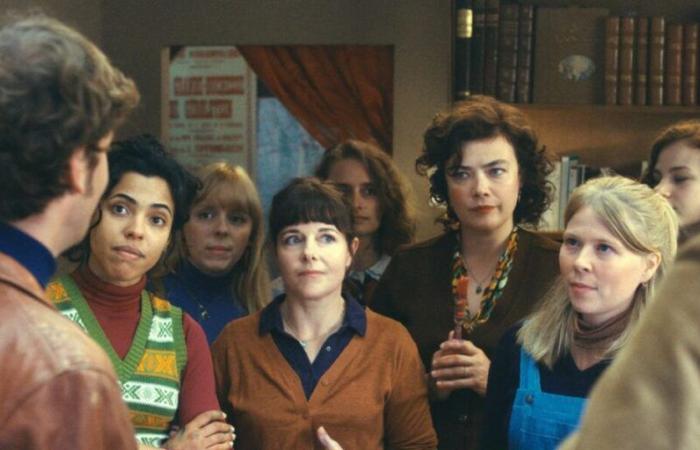Well surrounded, Laure Calamy radiates by activist for the right to abortion in Annie Angerbroadcast this Monday, May 5, 2025 at 9:05 p.m. on France 3 Monday. A beautiful film inspired by a really unjustly forgotten story.
It was not so distant for a time when abortion was illegal (Line Renaud notably mentioned his painful memory). An era when sexual withdrawal and abstinence during the fertility period of women constituted the main methods of contraception in France. It is in this context that militant doctors and feminists created in 1973 the movement for the freedom of abortion and contraception (MLAC). Opty for civil disobedience, their volunteers then practice illegal abortions everywhere in France. With Annie Angerdirector Blandine Lenoir (Dawn2016) pays a marking tribute to this association (and its members) having greatly contributed to the adoption of the Veil law in January 1975. At the center of the film is the fate of a married worker and mother of two children who find herself accidentally pregnant and joins an antenna of the MLAC to resort to abortion (now included in the Constitution).
What is the Karman method, technique at the center of the film Annie Anger ?
Taking the spectator by the hand, Blandine Lenoir offers a didactic diving in the functioning and the role of an unknown and even forgotten movement. A long clandestine meeting at the rear of a bookstore recalls the then amazing reality, of women bruised by raw curetages and knitting needles traditional abortions. To these violent paths both physically and psychologically opposes the Karman method (by suction using a cannula), an alternative without risk and almost painless used by the MLAC. The numerous sequences of abortion filmed with modesty and delicacy then tell the sorority of these activists. From these benevolent faces, often in close -ups, emanate relief and tenderness.
Laure Calamy particularly just in a different role for Annie Anger
Lulled by the sweet voice of the luminous Monique (Rosemary Standley), Annie saw her abortion as a release. She discovers her body. The mutual aid of this community fascinates her. This woman, initially erased, gradually flourishes as an activist and no more mother. “I’m tired but what am I feeling useful“she advances in the last part of the film. While restrained and looks, Laure Calamy illustrates in her accuracy in a different role from her standards. Around her, Zita Hanrot’s brute force convinces as much as the sweetness of India Hair. Two archive sequences finally anchor this victorious fight in reality. A film more than necessary for the yardstick of the resurgence of an anti-abortion ideology.








